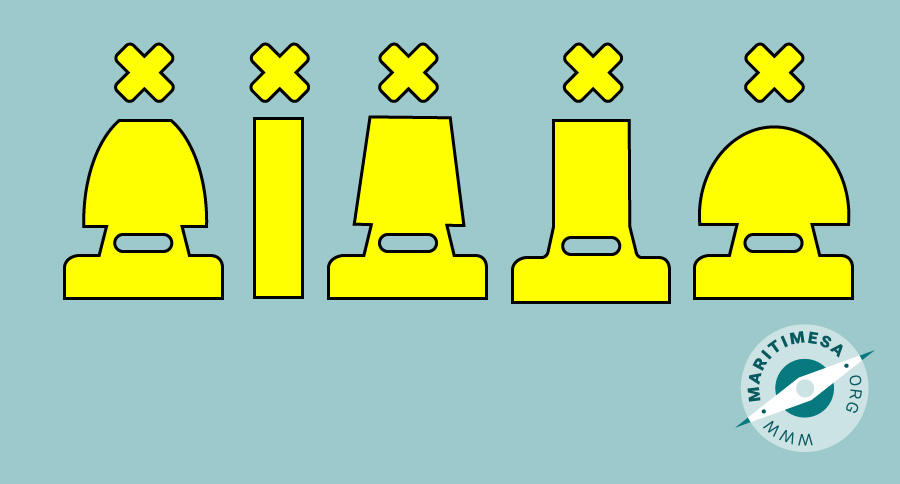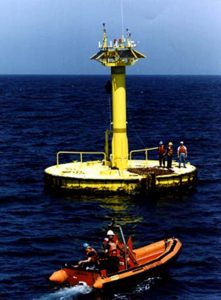
Special marks.
Purpose.
To indicate to the mariner a special area or feature the nature of which is apparent from reference to a chart, sailing directions or notices to mariners. Special marks may be lettered to indicate their purpose.
Uses include the following:
- ODAS (Ocean Data Acquisition System) buoys.

Example of an ODAS buoy.
- Traffic separation schemes where use of conventional marking may cause confusion, though many schemes are marked by lateral and safe water marks.
- Spoil grounds
- Military exercise areas
- Cables or pipelines (including outfall pipes)
- Recreation zones
Another function of special marks is to define a channel within a channel, eg a channel for deep draught vessels in a wide estuary, where the limits of the channel for normal navigation are marked by red and green lateral buoys, may have the boundaries of the deep channel indicated by yellow buoys of the appropriate lateral shapes, or its centreline marked by yellow spherical buoys.
Colour.
Yellow is the colour for special marks.
Shape.
Optional shapes are used for special buoys, but must not conflict with that used for lateral or safe water marks, eg an outfall buoy on the port side of a channel could be can shaped but not conical.
Topmark.
A single yellow X is the form of topmark used when one is carried.
Lights.
A yellow light is used, when one is exhibited. The rhythm may be any, other than those used for the white lights of cardinal, isolated danger and safe water marks. The following are examples permitted:
- Group occulting
- Flashing
- Group flashing with a group of 4,5, or (exceptionally) 6 flashes.
- Composite group flashing
- Morse code letters, other than morse code A, D, or U.
In the case of ODAS buoys, the rhythm is group flashing with a group of 5 flashes every 20 seconds.
Retroreflectors.
One yellow band, an X, or a symbol are used.

